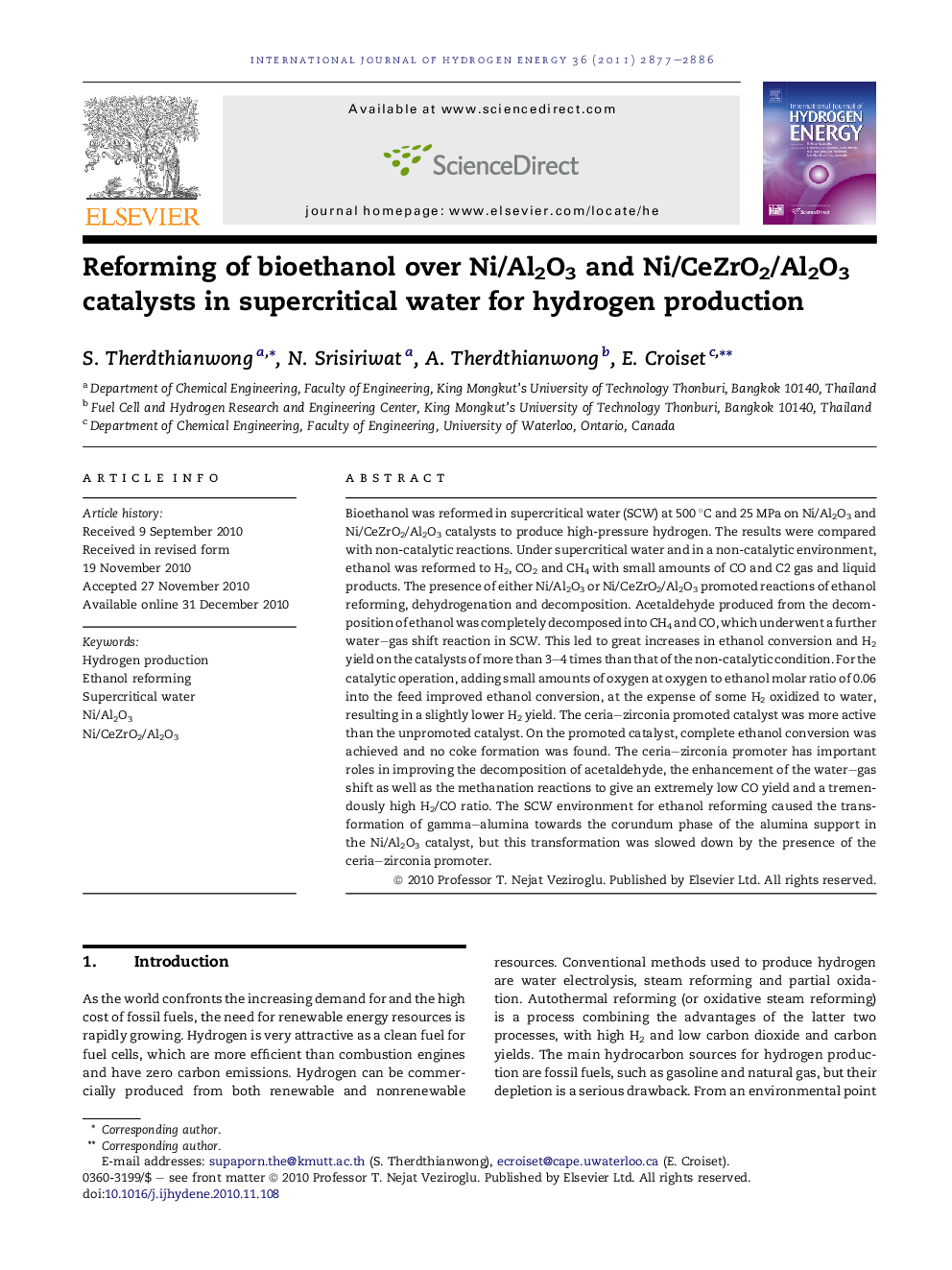| Article ID | Journal | Published Year | Pages | File Type |
|---|---|---|---|---|
| 1276401 | International Journal of Hydrogen Energy | 2011 | 10 Pages |
Bioethanol was reformed in supercritical water (SCW) at 500 °C and 25 MPa on Ni/Al2O3 and Ni/CeZrO2/Al2O3 catalysts to produce high-pressure hydrogen. The results were compared with non-catalytic reactions. Under supercritical water and in a non-catalytic environment, ethanol was reformed to H2, CO2 and CH4 with small amounts of CO and C2 gas and liquid products. The presence of either Ni/Al2O3 or Ni/CeZrO2/Al2O3 promoted reactions of ethanol reforming, dehydrogenation and decomposition. Acetaldehyde produced from the decomposition of ethanol was completely decomposed into CH4 and CO, which underwent a further water–gas shift reaction in SCW. This led to great increases in ethanol conversion and H2 yield on the catalysts of more than 3–4 times than that of the non-catalytic condition. For the catalytic operation, adding small amounts of oxygen at oxygen to ethanol molar ratio of 0.06 into the feed improved ethanol conversion, at the expense of some H2 oxidized to water, resulting in a slightly lower H2 yield. The ceria–zirconia promoted catalyst was more active than the unpromoted catalyst. On the promoted catalyst, complete ethanol conversion was achieved and no coke formation was found. The ceria–zirconia promoter has important roles in improving the decomposition of acetaldehyde, the enhancement of the water–gas shift as well as the methanation reactions to give an extremely low CO yield and a tremendously high H2/CO ratio. The SCW environment for ethanol reforming caused the transformation of gamma–alumina towards the corundum phase of the alumina support in the Ni/Al2O3 catalyst, but this transformation was slowed down by the presence of the ceria–zirconia promoter.
